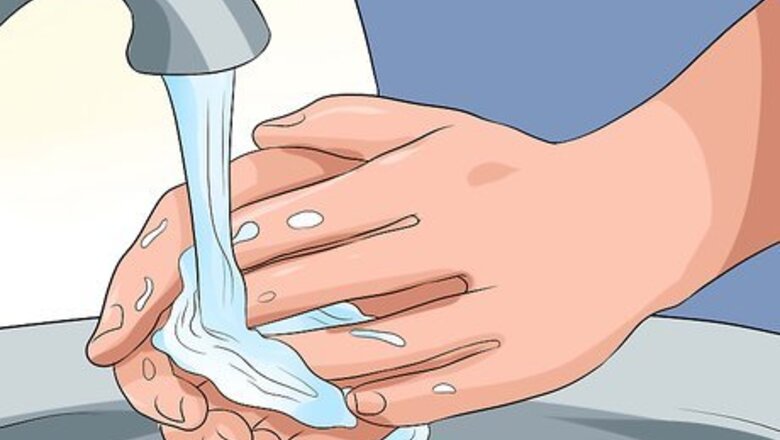
views
Removing Soft Contact Lenses
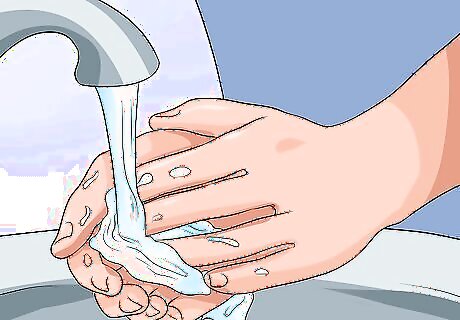
Wash your hands. Your hands should always be clean whenever inserting or removing your contact lenses. Your hands carry around thousands of bacteria, including fecal bacteria, just from the things you touch every day. Wash your hands with soap and warm water before touching your eyes to prevent infection. For stuck lenses, washing your hands is even more important, because you'll likely be touching your eye area for a longer period of time. The more time your fingers spend in contact with your eyes, the more likely you are to spread contamination. Do not dry the palm or fingertips of the hand that is going to touch your eye. Otherwise, you might get towel fibers or lint in your eye.

Stay calm. Panicking or getting overly anxious about the situation will just make it more difficult to remove the lenses. If you feel anxious, take a few deep breaths before you continue. Don’t worry! Your contact lens cannot get stuck behind your eyeball. The conjunctiva, a mucous membrane in front of your eye, and muscles around your eye called the rectus muscles make this impossible. Getting a soft contact lens stuck in your eye is not a serious health risk, unless you leave it for a long period of time. While it may be irritating, it is unlikely to damage your eye. However, a rigid lens can cause a cornea abrasion if it is broken and that can lead to an infection. If you've made several unsuccessful attempts to remove the lens, take a break from trying for a bit. Sit down for a while and relax.
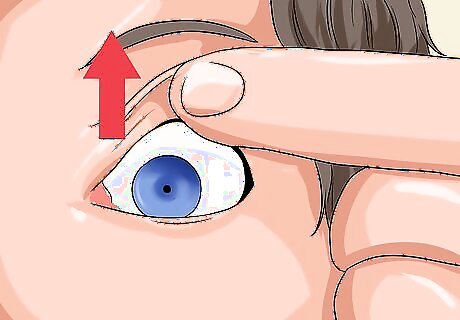
Locate the lens. In many cases, contact lenses get stuck because they have slid out of their proper place over the cornea. If this is the case for you, you'll need to find the lens before you can remove it. Close your eyes and relax your eyelids. You should be able to feel where the lens has gone. If you can't feel it under your eyelid, gently touch the lid with your fingers and see if you can locate it. If the lens has moved to the corner of your eye, you may be able find it just by looking in the mirror. Try looking in the opposite direction of the lens. For example, if the lens feels like it's in the right corner of your eye, look left. Or, if the lens feels like it’s stuck in the bottom part of your eye, look up. The lens may become visible. If you can't feel or see the lens, it is possible it has fallen out of your eye. Put your finger at the top of your eyelid (near your eyebrow) and pull up to hold your eyelid open. This may help you see the contact lens better. Keep in mind that if you look down with your eyes while pulling up on the eyelid, it paralyzes the orbicularis oculi muscle and you can't squeeze it shut until you look up again.
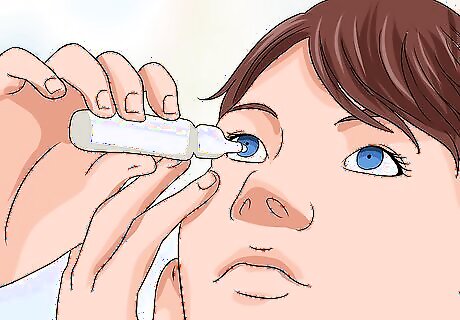
Moisten the lens. Lenses can get stuck because they have dried out. Moisten the lens with saline solution. Apply the saline solution directly to the lens, if possible. Wait for a few minutes to allow the lens to hydrate and soften. If the lens is stuck under your eyelid or in the corner of your eye, the added moisture may help it float back into its proper place, where it will be easier to remove. Often, moistening the lens will allow you to remove it through conventional methods. Blink several times or close your eyes for a few seconds, then try to remove the lens again.
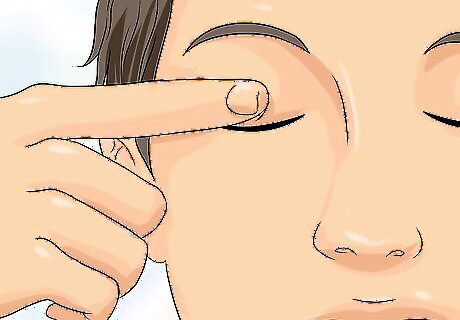
Massage your eyelid. If the lens remains stuck or trapped under the eyelid, close your eyes and gently massage the lids with your fingertips. If the lens is still out of place, try to push it over the cornea. If your lens is stuck under your eyelid, it may help to look down while massaging the eyelid.
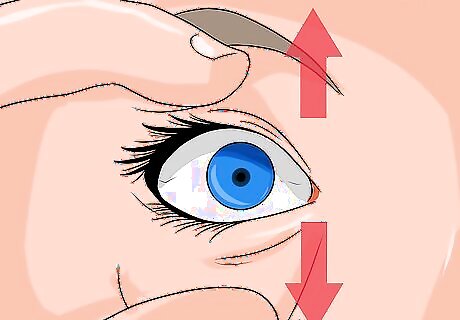
Change your approach. If the lens is in its proper place but still won't come out, try using a different method of removing your contact lens. Most people pinch their lenses out, but you can also try removing them by placing a finger on each eyelid and applying gentle pressure as you blink. You can use either the index finger or the middle finger of each hand. With the finger on your upper lid, press straight down. With the finger on your lower lid, press straight up. The lens should pull away from the eye and be easy to remove.
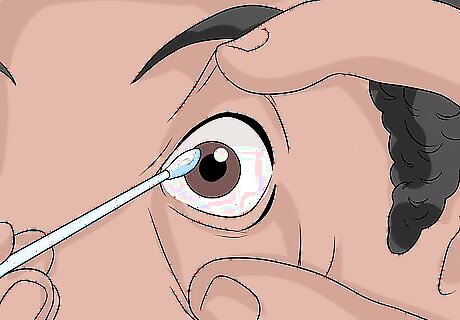
Lift your eyelid. If the lens is still stuck and you think it may be lodged under your eyelid, try gently lifting the lid away from your eye and turning it inside out. To do this, use a cotton tip and press down on the middle of the eyelid while pulling the eyelashes forward away from the eye. Tip your head backward. You should be able to see the contact lens if it is stuck under the lid. Carefully pull it out from underneath your eyelid. You may need the help of a friend or family member to do this.
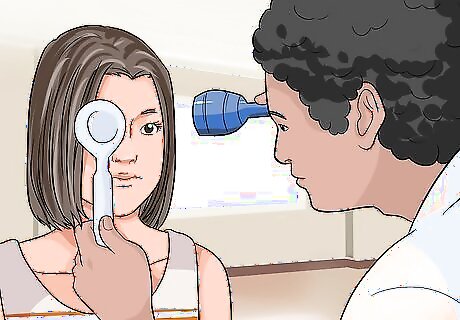
See your eye doctor. If all else fails, or if your eye becomes extremely red or irritated, go to your local doctor, optometrist, or hospital. They can remove the lens without causing further damage to your eye. If you believe you have scratched or otherwise damaged your eye in attempting to remove the lens, contact your eye doctor immediately. You should see a doctor about possible damage whether you have successfully removed the lens or not.
Removing Rigid Gas Permeable Contact Lenses
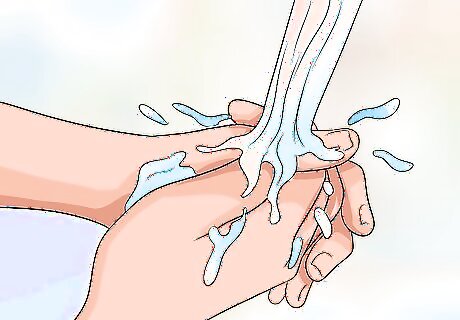
Wash your hands. Thoroughly clean your hands with soap and water. Don't dry the fingers that are touching the eye to avoid getting lint in the eye. Your hands should always be clean whenever inserting or removing your contact lenses. Thorough washing is especially important if you are touching your eye for a longer period of time, such as when trying to remove a stuck lens.

Stay calm. A stuck lens is not an emergency, and anxiety will only make it harder to locate and remove the lens. Your contact lens cannot get stuck behind your eyeball. The conjunctiva, a mucous membrane in front of your eye, and muscles around your eye called the rectus muscles make this impossible. Getting a contact lens stuck in your eye is not a serious health risk, unless you leave it for a long period of time. While it may be irritating, it is unlikely to damage your eye. If the contact lens is broken it may be painful.
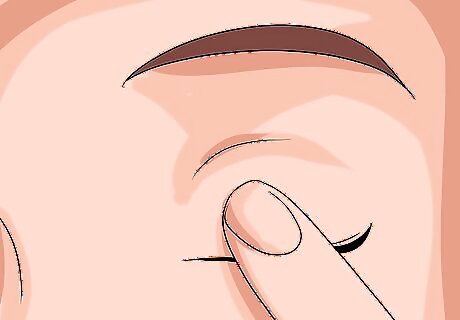
Locate the lens. In most cases, rigid contact lenses get stuck because they have slid out of their proper place over the cornea. If this is the case, you'll need to determine where in your eye the lens has moved before you can remove it. Close your eyes and relax your eyelids. You should be able to feel the lens in your eye. If you can't feel it under your eyelid, gently touch the lid with your fingers and see if you can locate it. If the lens has moved to the corner of your eye, you may be able locate it just by looking in the mirror. Try looking in the opposite direction of the lens. For example, if the lens feels like it's in the right corner of your eye, look left. Or, if the lens feels like it’s stuck in the bottom part of your eye, look up. The lens may become visible. If you can't see or feel where the lens has gone, it is possible it has fallen out of your eye.
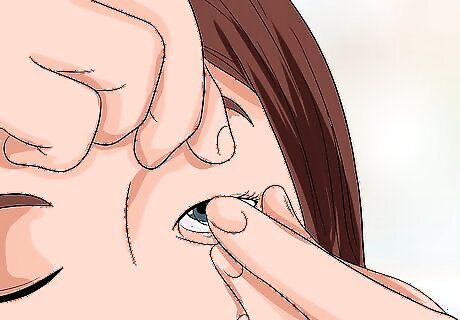
Break the seal. If the lens has moved to the white of your eye, you can often dislodge it by breaking the suction between the lens and eyeball. To do this, use your fingertip to gently press your eye just outside the edge of the lens. Do not massage the eyeball as you would with soft lenses. This may cause the edge of the lens to scratch the surface of your eye as it moves.
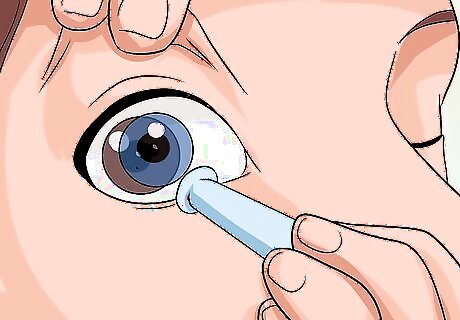
Use a suction cup. If the lens remains stuck, you can purchase a small suction cup tool in the eye-care section of many drug stores which will allow you to remove the lens. Ideally, your optometrist will have taught you this technique before prescribing the lens. First, wash the suction cup with contact lens cleaner. Moisten the suction cup with saline solution. Use your thumb and forefinger to separate your eyelids. Apply the suction cup to the center of the lens and pull it out, being careful not to touch your eye with the suction cup. The lens can be removed from the suction cup by sliding it gently sideways. Consider seeing a medical professional before choosing this method. Using a suction cup device to remove rigid lenses on your own can cause trauma to your eye.
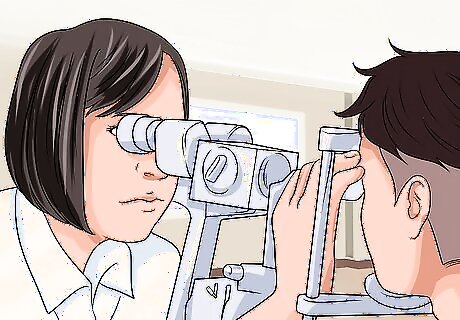
Get to a doctor if necessary. If you cannot remove the lens, go to your local doctor, optometrist, or hospital to have them remove the lens for you. You should also seek medical assistance if your eye becomes very red or irritated. If you believe you have scratched or otherwise damaged your eye in attempting to remove the lens, contact your eye doctor immediately. You should seek medical assistance whether you have successfully removed the lens or not.
Practicing Good Contact Lens Hygiene
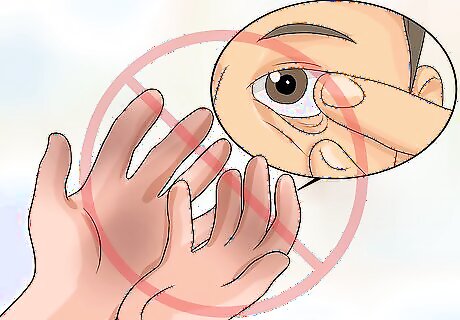
Avoid touching your eyes without washing your hands first. Your hands carry thousands of germs from the everyday objects you touch. Wash your hands thoroughly with soap and warm water before ever touching your eyes. If you touch your eyes with dirty fingers and hands, you could cause eye infections or scratches.
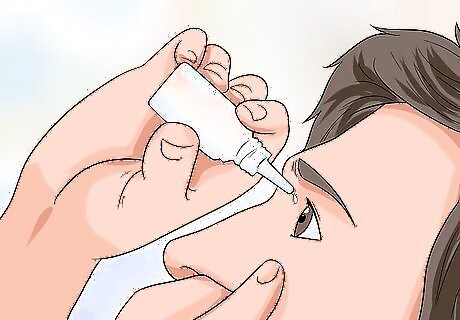
Keep your eyes lubricated. Use contact lens eye drops or lubricating drops to keep your eyes moist throughout the day. This will help keep your lenses from getting stuck. If you develop itchiness or redness after using drops, try to find a product marked “preservative-free.”
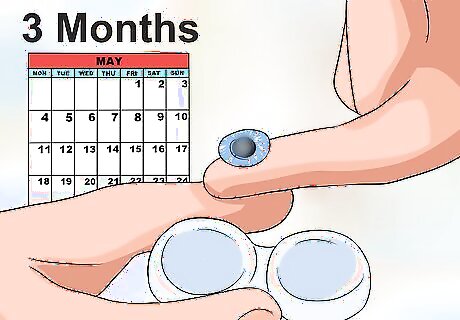
Keep contact lens cases clean. Clean your lens case every day. After you’ve put in your contacts, wash the case with sterile solution or hot (preferably distilled) water. and soap. Do not leave the case full of tap water. That causes fungal and bacterial infections. Allow the case to air dry. Replace your lens case every three months. Even with daily cleaning, bacteria and other nasty stuff will eventually get into your case.
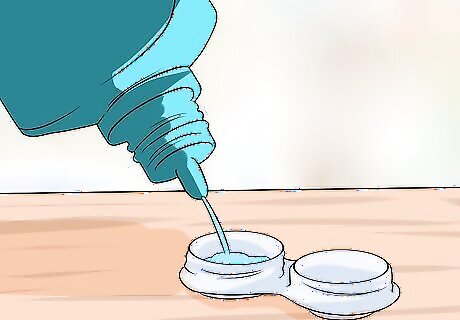
Replace the solution in your contacts case every day. After you’ve cleaned your case and let it air dry, put fresh, clean contact solution into the case. The solution loses its potency after awhile, so keeping it fresh every day will help your lenses stay disinfected and clean.
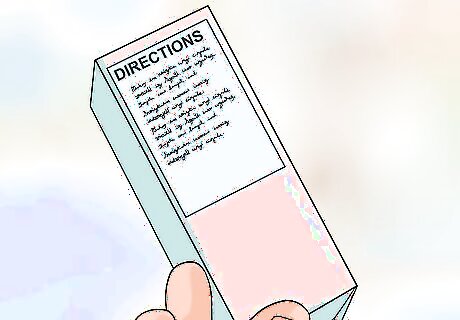
Follow the directions to clean and sanitize your type of lens. Different types of lenses require different care products. Use the correct type of solution for your type of lenses. Follow your eye care professional’s recommendations for cleaning and sanitizing your lenses. Use only commercially prepared solutions, eye drops, and cleaners to reduce your risk of infection.
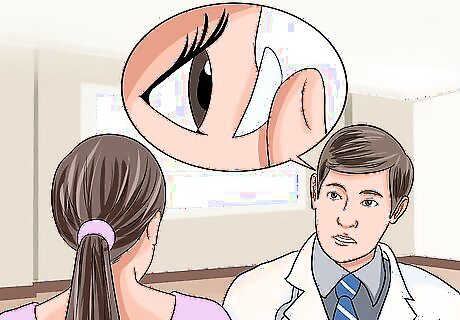
Wear your lenses only as recommended by your eye care professional. Your eye care professional should give you a range of how long it is safe to wear your lenses each day. Use your lenses in accordance with these professional recommendations. Do not sleep with lenses in unless you’ve been prescribed “extended wear” contact lenses. Even then, professionals don’t recommend sleeping in these lenses, as it can increase your risk of eye infections.
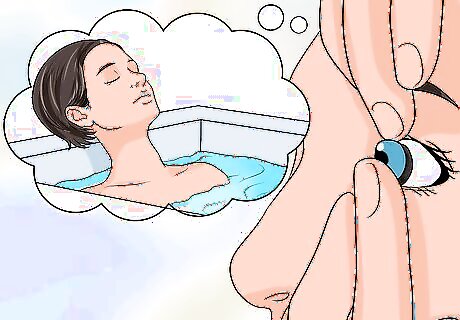
Remove your lenses before contact with water. If you’re going swimming, taking a bath or shower, or getting in the hot tub, take your lenses out first. This will help minimize your risk of infection.
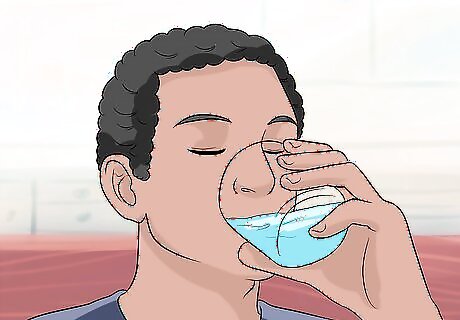
Keep hydrated. Your contacts can get stuck to your eyes when the lenses dry out. One way to help avoid this is to drink plenty of water throughout the day. Drinking enough fluids will help your eyes stay moist. The recommended daily intake for men is at least 13 cups (3 liters) a day. The recommended intake for women is at least 9 cups (2.2 liters) a day. If you routinely have dry eyes, try to stay away from alcohol and excessive caffeine when possible. These substances dehydrate your body. Water is best for you, but other good options include fruit juices, milk, and unsweetened, non-caffeinated teas like Rooibos and many herbal teas.
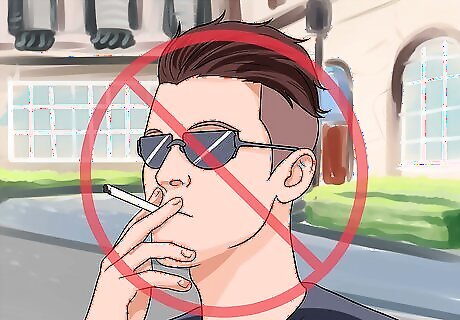
Stop smoking. Studies have shown that smoking makes dry eyes worse. “Dry eye” can result in your contact lenses getting stuck. Smokers who wear contact lenses have more problems with their lenses than non-smokers. Even passive (second-hand) exposure to cigarette smoke can cause issues for contact-lens wearers.
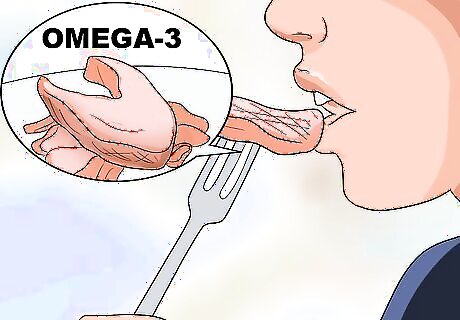
Stay healthy. You can help prevent eye issues by eating well, exercising, getting enough sleep, and reducing eye strain. Green leafy vegetables, such as spinach, collards, kale, and other greens are excellent for eye health. Salmon, tuna, and other fatty fish contain omega-3 fatty acids that can help prevent some eye issues. Studies have shown that people who exercise regularly have better eye health overall. They are also less likely to develop serious eye diseases such as glaucoma. If you don’t get enough sleep, it can have effects on your eyesight. The most common side effect is dry eyes. You might also experience eye twitches or spasms. Try to reduce eye strain when you can. You can do this by reducing glare from your electronics, setting up an ergonomically correct workstation, and taking frequent breaks from working that involves your eyes.
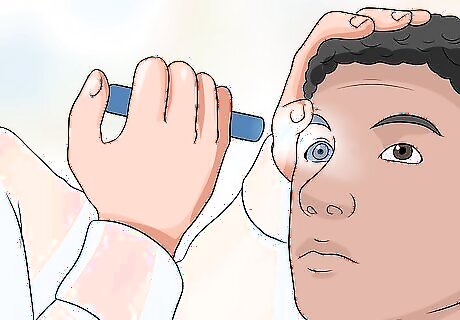
Have your eyes examined regularly. Seeing an eye care professional regularly can help keep you from developing issues. Regular professional exams can also detect eye diseases such as glaucoma. If you have existing eye issues or you are in your late 30s, you should see an eye doctor yearly. Adults between the age of 20-30 should have an eye exam at least every two years.
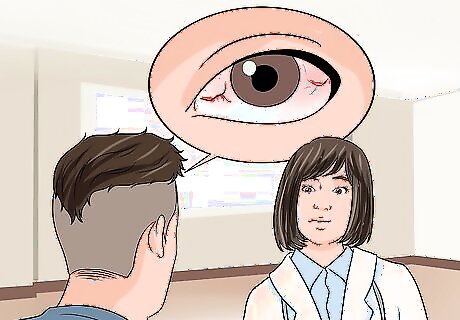
Talk to your doctor about any problems. If your lenses continue to get stuck to your eyes, see an eye doctor. You may have a more serious issue. You can also ask your doctor about prevention methods. See a doctor immediately if you have any of the following symptoms: Sudden loss of vision Blurred vision Flashes of light or “halos” (bright fields around objects) Eye pain, irritation, swelling, or redness















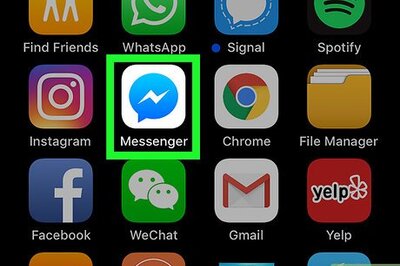
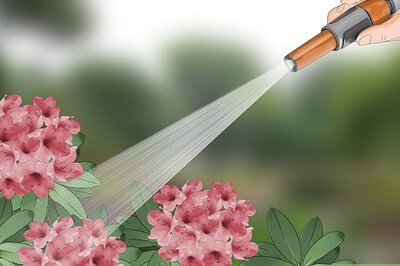



Comments
0 comment